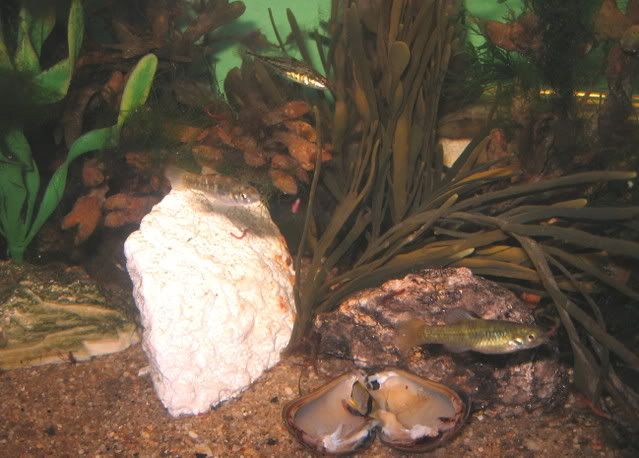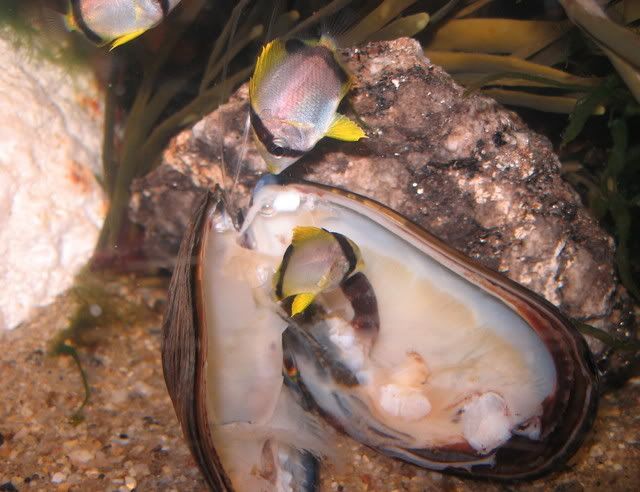Nevertheless, there are numerous really cool native marine fish that are perfect for aquarium life. That includes the ones from warmer places. They're still "native" and can be hand collected by anyone here who is a reasonable drive from anywhere on the Atlantic or Gulf coasts [the Pacific is a whole nother ballgame].
For that reason, I am continuing my efforts to introduce saltwater natives to those willing to take a look.
I had a very reduced fall season this year. Being unemployed in September really set me back and the dismally poor surf fishing this season has killed my incentive to go much in October. I did get to make two weekend trips and saw and caught a few cool fish. What follows are pics from the temporary tank I set up to acclimate and tame my new additions from those two trips.
It's an oddball mix of cool water and tropical, er, I mean warm water species.


I inadvertently grabbed a pair of rainwater killies when I was blind netting for sticklebacks.




Despite bragging about how easily I could get sticklebacks, I didn't turn up too many. Of course I didn't spend much time in the marsh either. I did get two each of 3 spine and 4 spine. In the second pic of the rainwaters above you can see a top view of a threespine that shows the lateral keel on the caudal peduncle. That is the feature that I look for when I'm shining a flashlight down on a school of sleeping silversides hoping to find a stickleback or two mixed in.
They are one of my favorite salt/brackish cool water native.


The fourspine is also a great fish, if a little nippy at times.

Finishing up with the cool water stuff, ghost shrimp can be found in amazing numbers in the saltmarshes and make interesting scavengers as well as great feeders.

Stay tuned for the warm water species.















